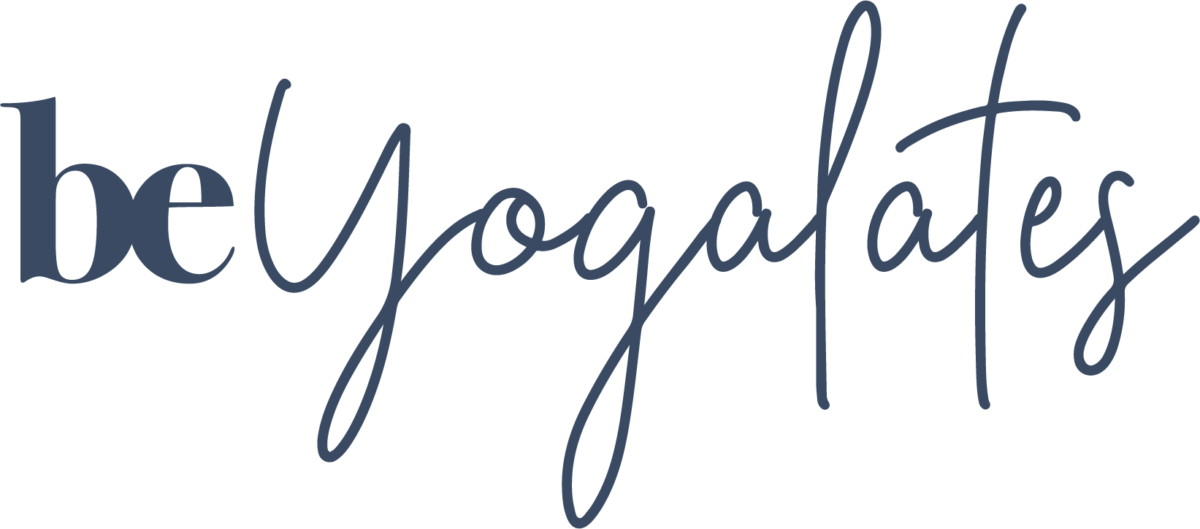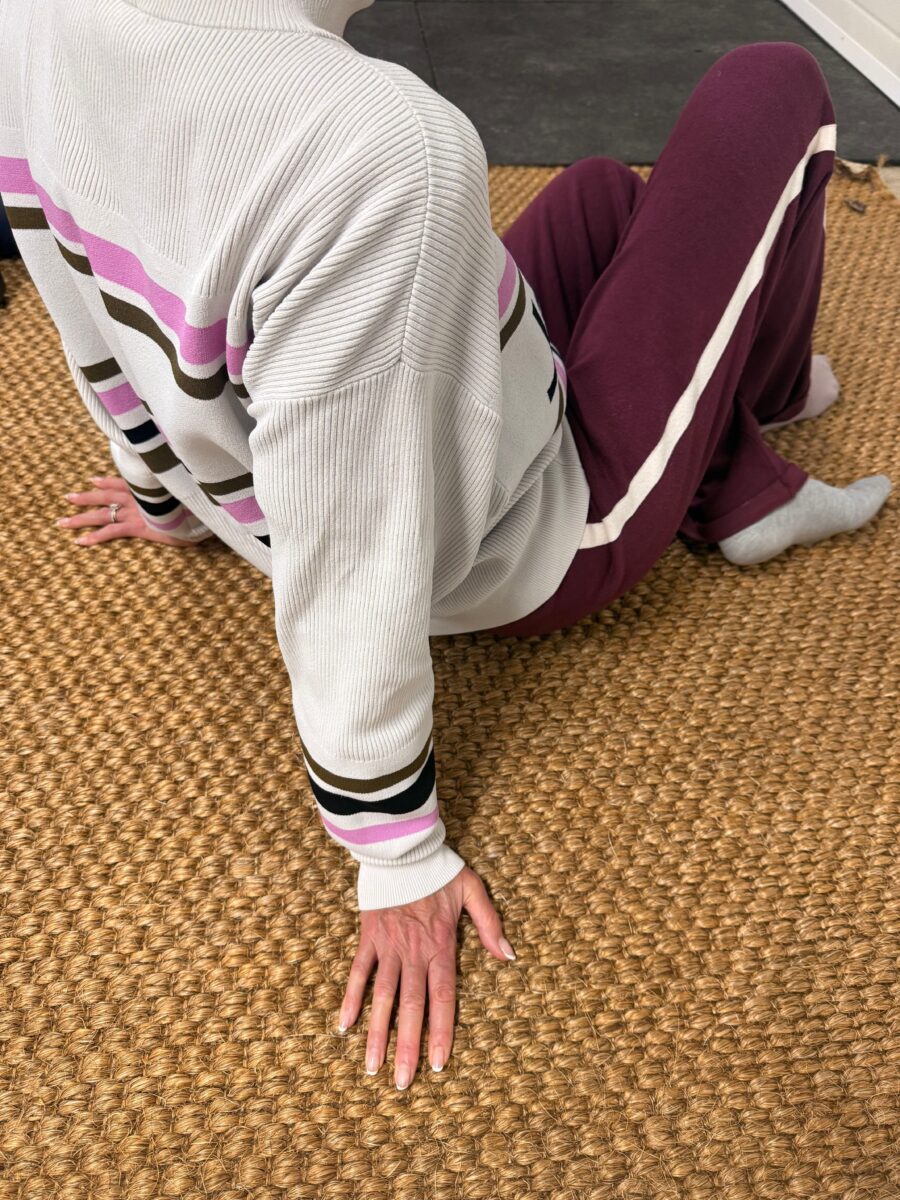The ability to sit on the floor comfortably – or even get up and down off the floor easily is something that many people find a challenge.
And yet, this should be one of the easiest, and most natural things to be able to do. It might even define the ageing process as being a measurement of our natural flexibility and mobility. Sitting cross-legged on the floor is known as sukhasana or lotus – claimed to have been designed to stretch the muscles, improve posture and bring peace of mind
It’s an everyday action that we take for granted as children—constantly getting up, down, and moving on the floor. Yet, for many adults, especially as we age, the floor becomes a distant, challenging landscape. Reaching for something dropped, playing with a grandchild, or simply sitting comfortably without the support of a chair can feel like a genuine struggle.
This is why, as a physiotherapist and yogalates consultant I tell my clients ” this isn’t just about comfort; it’s a vital indicator of your overall physical health. Xx”
Your “ground game” — the ease with which you move between standing and sitting on the floor—is a powerful proxy for your:
* Mobility:
The range of motion in your hips, knees, and ankles.
* Flexibility:
The length of your muscles and connective tissues.
* Balance & Agility:
Your body’s ability to coordinate movement and maintain stability without immediate aid.
* Muscle Strength:
Particularly in your core and legs, which power the transition.
In fact, research—notably the famous Brazilian “Sitting-Rising Test”—suggests that your score on this simple act can even be an indicator of longevity.
The easier you can get up off the floor without using your hands or knees for support, the lower your risk of premature death, largely because it demonstrates the critical fitness markers mentioned above.
Think about it: when you avoid the floor, you’re avoiding an entire spectrum of necessary movement.
You limit your joints to the small range of motion required for sitting in a chair or walking. As the saying goes, “if you don’t use it, you lose it.”
The good news is that this is a skill you can—and should—reclaim. By making small, intentional changes to incorporate floor sitting into your daily life, you actively push back against the stiffness and loss of strength that often accompanies the aging process.
These cross-legged, squatting and kneeling positions stretch your hips, legs, pelvis and spine helping to promote natural flexibility and movement. Given that people now spend increasing amounts of time sitting during the day, should we be opting for the floor over a chair in the interest of our health and wellbeing?
Effects on the body
Anecdotal and clinical evidence shows that different ways of sitting place different physical stresses on our bodies. Sitting for a long time in the same position normally affects the structure of your low back, called the lumbar region of the spine and the movement characteristics of your pelvis. And it’s believed this might lead to health problems in the long run, such as arthritis.
Previous research has shown that when sitting on the floor, the changes in the lumbar lordosis mostly occur at a vertebral or the segmental level at the lower end of the spine. In this respect, sitting on the floor can easily aggravate lower back pain. To avoid this, sitting with a lordotic lumbar curve is important.
So what’s the best way to sit? While a comfortable sitting position will probably vary from person to person, the key to good sitting is regular movement and changing your position often. These changes could be as simple as moving side to side in the chair or standing up and stretching every now and again. Basically, listen to your body, it will tell you what it needs.
Ready to improve your ground game? Start simple:
* Ditch the couch:
Try sitting on the floor for just 5-10 minutes while watching TV or reading. Use a cushion or folded blanket under your hips to start.
* Change your position:
Don’t stay rigid. Shift between cross-legged, kneeling, and legs-out positions to explore your joints’ full range.
* Practice the transition:
Safely and slowly practice getting down to the floor and back up once a day, using as little assistance as possible.
Re-engaging with the floor is one of the most effective, zero-equipment “bio-hacks” for a more mobile, flexible, and ultimately, healthier life. It’s time to make the floor your friend again.
If you are having difficulty maintaining an erect spine while sitting cross-legged, begin by sitting on the edge of a cushion, bolster, or rolled blanket.
Mobility of the spine and in particular the relationship between the spine and the pelvis is key here. I explain to my physiotherapy clients that we all have a natural curve to the spinal column to make it a springy, responsive mechanism to movement and force. These curves develop from a baby, and you can see that a baby not being able to sit onto the floor when they are young is due to the lack of curve and muscle mass to support the spine.
When we get older, the lack of ability tends to be around a “stiffening” of the spine alongside a loss of muscle mass to support the core.
Then there is the mechanical action of how the leg bones and muscles interact with the pelvis to “lift” the body up, or lower with control down to the floor. This is reliant on the strength of the leg muscles, the joint strength and mobility and the ability of the core muscles to fire and help stabilise the upper body or trunk to facilitate moving such a heavy force.
To do…
maintain mobility of the spine with daily movement throughout the range.
This can be done with both movement of the joints and stretching of the tighter muscles. Start with small range of movement through the joints to help the synovial fluid nourish and brace the joint. Then use more complex body movements that reach diagonally across the body to allow more natural freedom of movement. If the door jam is stiff we oil it and look after it – apply the same care and maintenance to your body. Ignoring the issue or avoiding movement will not improve matters. Neither will sitting still for hours at a desk – get up and move, think about lifting your arms, doing some side bends and knee lifts every hour and try to walk for at least 10 minutes during your lunch break.
Strengthening the body with exercises to support the shoulder girdle can be of great value.
This can be done at home with planks, pushups, side planks, Thera bands or dumbbells .. Think about strengthening the upper back to try and maintain the upper body curves that help the rib cage sit up and reduces the strain placed on the abdominal area and pelvic floor.
Leg exercises are essential and walking alone will not be sufficient.
You need to work the legs in a 3-dimensional range – walking, although great, propels the body forward in a liner fashion, but we need to train the muscles through the sides too. This will improve the hip stability and knee power. Think about lateral movements – such as side leg lying, where gravity and body weight act as forces, as well as more complex exercises such as lunges , squats, split squats, once you have gained some stability in the knee joint.
Core exercises are fundamental to our body moving with ease.
Not only in helping to maintain our spinal position, but also to act as the “powerhouse” to brace the spine and pelvis connection. It also helps to adjust the internal pressure so that we do not increase heart pressure when we move – so if you feel dizzy or lightheaded when you get up or down off the floor, please take note.
Use a range of exercises to target the body in different positions and think about loading the spine in its natural curve to begin with – that is to say avoid sit-ups to begin with and concentrate more on single leg stretch, dead bug or modified plank.
Stretch the tight areas with gentle moving stretches
that gradually increase your range of movement before you go into a held position. Try to keep breathing through this, not only to help with any blood pressure issues, but to keep the intercostal muscles pliable and ribs responsive and mobile.
Losing deep abdominal fat has many health benefits, but in this instance it is almost like having an additional rucksack inside your body – making it even more challenging to move.
Start with small changes and move towards a more Mediterranean based diet to see some significant results.
See you on the mat,
Lisa x

